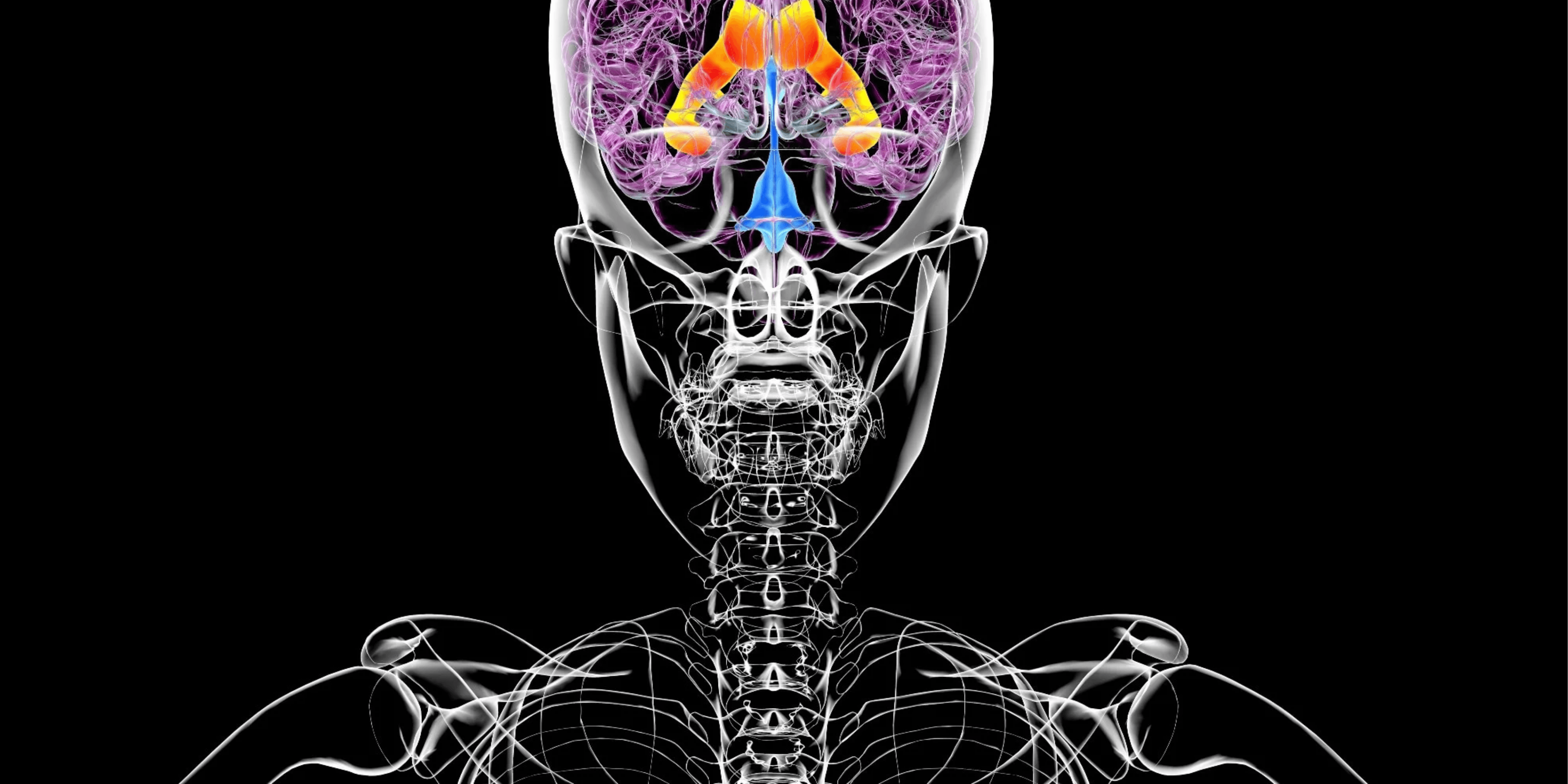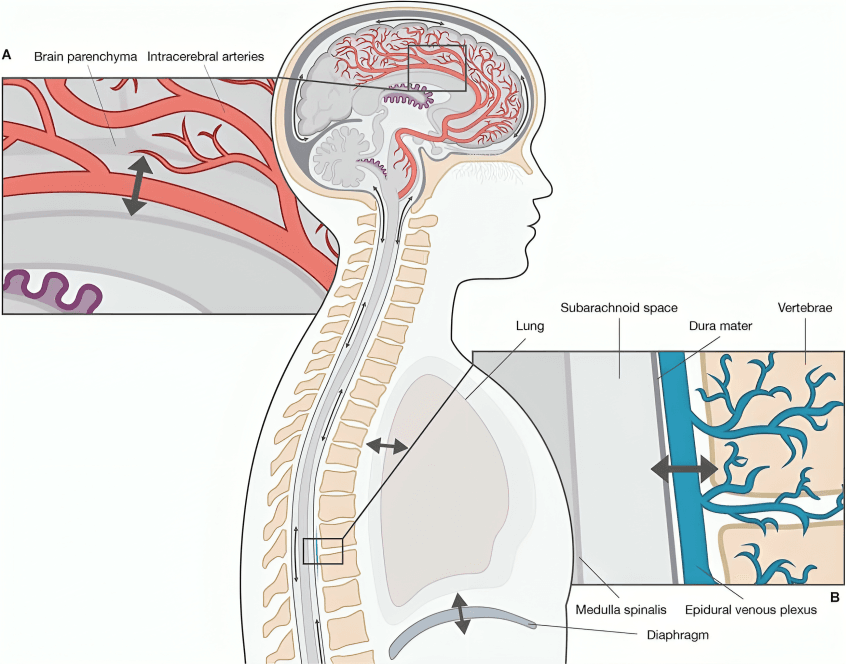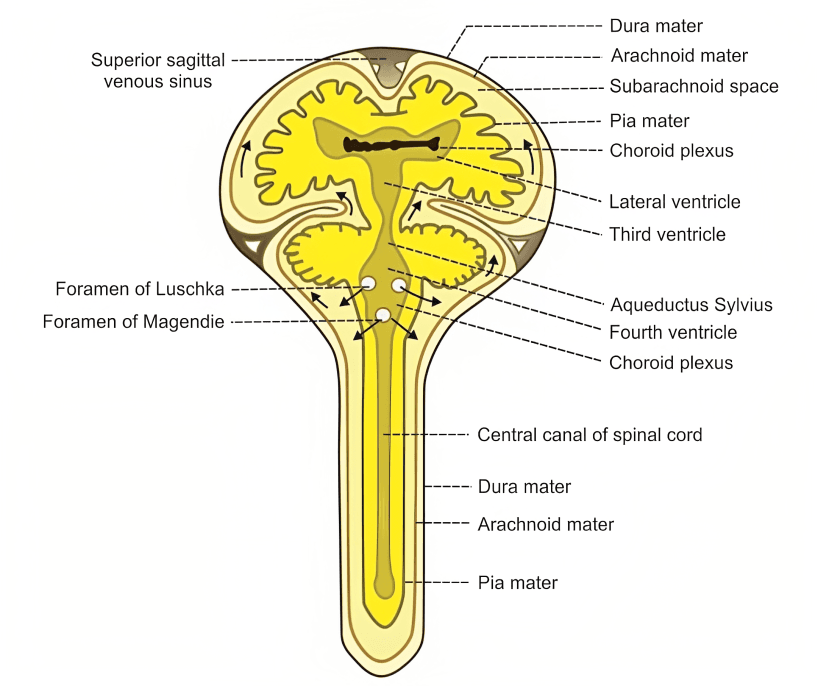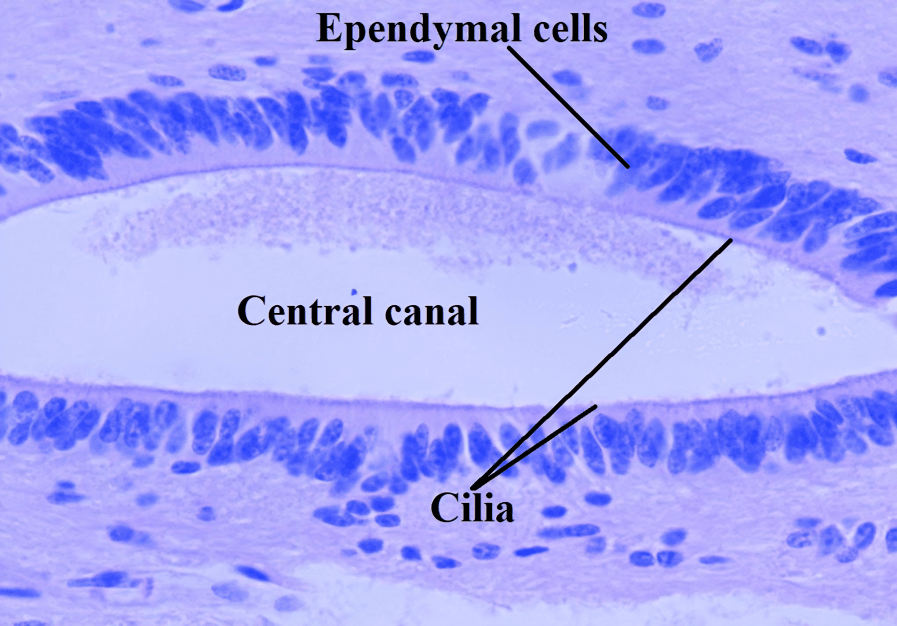
“
The central canal and CSF flow play a crucial role in maintaining the health and function of the spinal cord and brain. The central canal is a narrow, fluid-filled passage running through the spinal cord's length, carrying cerebrospinal fluid (CSF). This flow of CSF cushions neural tissue, removes waste, and distributes nutrients. 1
1
”
French physician François Magendie first described cerebrospinal fluid flow through the central canal in the 19th century, laying the groundwork for understanding nervous system fluid dynamics. 1
The central canal extends from the brain’s fourth ventricle down the spinal cord, forming a continuous channel that allows cerebrospinal fluid to circulate and interact with spinal tissue. 2

Cerebrospinal fluid flows within the central canal at a slow but steady rate, propelled by the pulsatile action of the heart and rhythmic movements of the spinal cord during body motion.
The central canal’s lining consists of ependymal cells, which regulate the exchange of substances between the cerebrospinal fluid and spinal cord tissue, helping maintain a stable neural environment. 3
CSF circulation within the central canal plays a key role in removing metabolic waste products from spinal cord cells, thus contributing to neural tissue detoxification. 4
Although narrow, the central canal can dilate or expand slightly in response to changes in cerebrospinal fluid pressure, adapting to maintain optimal flow and prevent blockages. 5
The CSF in the central canal carries essential nutrients like glucose and ions, which support spinal cord neurons and glial cells necessary for their function and repair. 6
The central canal’s fluid flow helps distribute neuroactive substances and hormones, allowing chemical signaling that can influence spinal cord function and reflexes. 7
Blockages or disruptions in central canal CSF flow can lead to neurological issues such as syringomyelia, a condition characterized by fluid-filled cysts damaging spinal cord tissue. 8

CSF flow through the central canal works in tandem with the subarachnoid space’s circulation, ensuring a constant exchange of fluids around and inside the spinal cord.
Research shows that normal CSF flow dynamics in the central canal help maintain spinal cord hydration, essential for neuron viability and preventing degeneration. 9
The central canal also plays a role during embryonic development, guiding the formation of spinal cord structures and the proper distribution of growth factors. 10
Studies indicate that the central canal’s CSF movement may assist in distributing immune cells within the spinal cord, contributing to neural immune surveillance. 11
The central canal acts as a low-resistance conduit, facilitating the drainage of excess CSF back toward the brain’s ventricular system and reabsorption into the bloodstream. 12
Anatomical variations exist in the size and shape of the central canal among individuals, which can affect CSF flow rates and susceptibility to certain spinal disorders. 13

The ependymal cells lining the central canal have cilia—tiny hair-like projections—that help propel CSF along the canal, promoting smooth and continuous flow.
Disruptions in CSF flow within the central canal have been linked to degenerative diseases such as multiple sclerosis and may influence disease progression. 14
The central canal has connections to small lateral recesses called the central canal dilatations, which act as reservoirs aiding in fluid distribution and pressure regulation. 15
The central canal’s proper function is essential for maintaining the delicate balance of ions such as sodium, potassium, and calcium, which regulate nerve impulse transmission. 16
German anatomist Friedrich Schlemm contributed to the detailed anatomical mapping of the central canal and CSF pathways, deepening knowledge of spinal cord physiology.17


